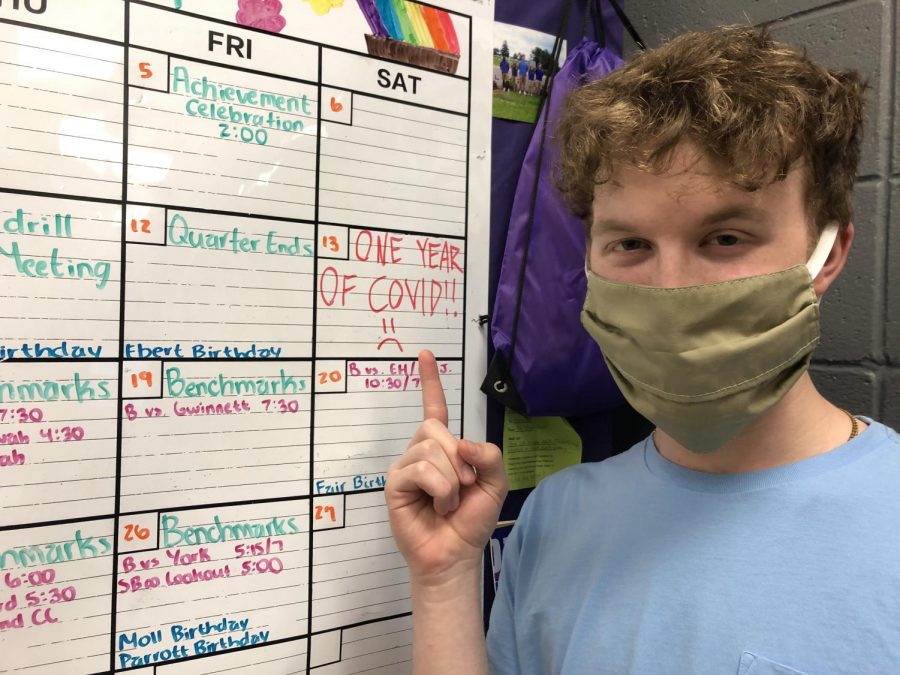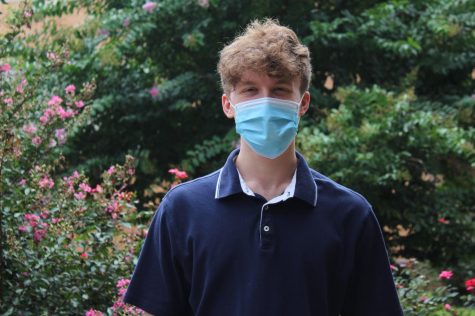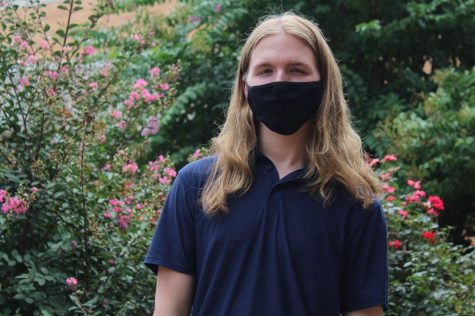The Gray Area: “Fifteen” Days to Slow the Spread
FIFTEEN DAYS? — Grayson Catlett points to March 13 on the calendar, marking the one-year anniversary of Hamilton County schools shutting down due to COVID-19.
March 18, 2021
Just recently, one full year has passed since the official beginning of the States’ COVID-19 pandemic. For students, what seemed to be an extended spring break evolved into a devastating lockdown that effectively cancelled the rest of the 2019-20 school year, as well as affecting the beginning of the following year. The drastic changes that came with it do not even need to be mentioned; all of us are very familiar with the “new normal.”
In a message to Hamilton County near the anniversary, Superintendent Dr. Bryan Johnson outlined the history and current outlook of the pandemic.
“Exactly one year ago today, Hamilton County Schools closed its doors and transitioned to remote learning for what we thought would only be two weeks,” he wrote. “Our students and staff never returned to school buildings for the rest of the school year, and the way we approach educating our students changed forever.”
I remember some of my peers being relieved over the idea of a remote learning week followed by spring break; school at home would be much more comfortable and flexible, especially without the need for a dress code. None of us, at that time, would predict how severe it would become.
“When it first started, I was unaware of how much my life would change. My first reaction was that it wouldn’t be a big deal, but I was very wrong,” said Senior Ashlee Smith.
Two weeks turned into three weeks, and then into the rest of the school year. School closures were followed by the closing of businesses and other public places, and public officials were suggesting for everyone to stay at home. Many school events, most notably prom and graduation, were cancelled for the class of 2020. Classes were abruptly cut off before their official end dates as many were not prepared to transition to a virtual setting. Hospitalizations and deaths began to occur. It finally dawned on many of us how serious this virus would be, with dismay over isolation and illness clouding the spring and summer air.
“Being locked up for almost two months was not exactly ideal, and I missed being with people a lot,” Smith recalled.
“Through the summer, we worked furiously alongside our teachers, parents, students, and community members to outline a plan for the 2020-2021 school year that offered a safe learning environment and robust instruction, whether students were working at home or in person,” Johnson stated.
Fortunately, with a robust awareness of the virus’s spread and a small number of cases, Hamilton County was “the first large school district in the state of Tennessee to open schools,” according to Johnson. The county would continue to stay open until mid-December, when a nationwide spike in cases prompted a return to a completely virtual environment.
One year later, the outlook on the pandemic has grown brighter. With three scientifically proven vaccines being utilized, some projections claim that a return to normalcy might be possible before the end of the summer. In Chattanooga, Hamilton County decided to transition away from their Phase Tracker, indicating that in-person learning will remain until the end of the year, due to the terminal trajectory of the virus.
“After the immensely challenging year we’ve all experienced, I found myself quite emotional last week as we were able to take a major step in our reopening plan,” Johnson said about the suspension of the Phase Tracker.
Despite the great position America has in defeating the virus, our job is not done. People need to stay vigilant in avoiding further spreads of the virus, no matter what that entails. It may not be easy, but the sooner it is contained, the quicker we can create the virus-free summer that 2020 was supposed to have. It is a downhill battle from here, so we can finish strong and ensure a safe and lively summer for everyone.
“The work is not over, but after seeing what our community is capable of over the last year, we are more hopeful than ever for the future,” Johnson closed.






